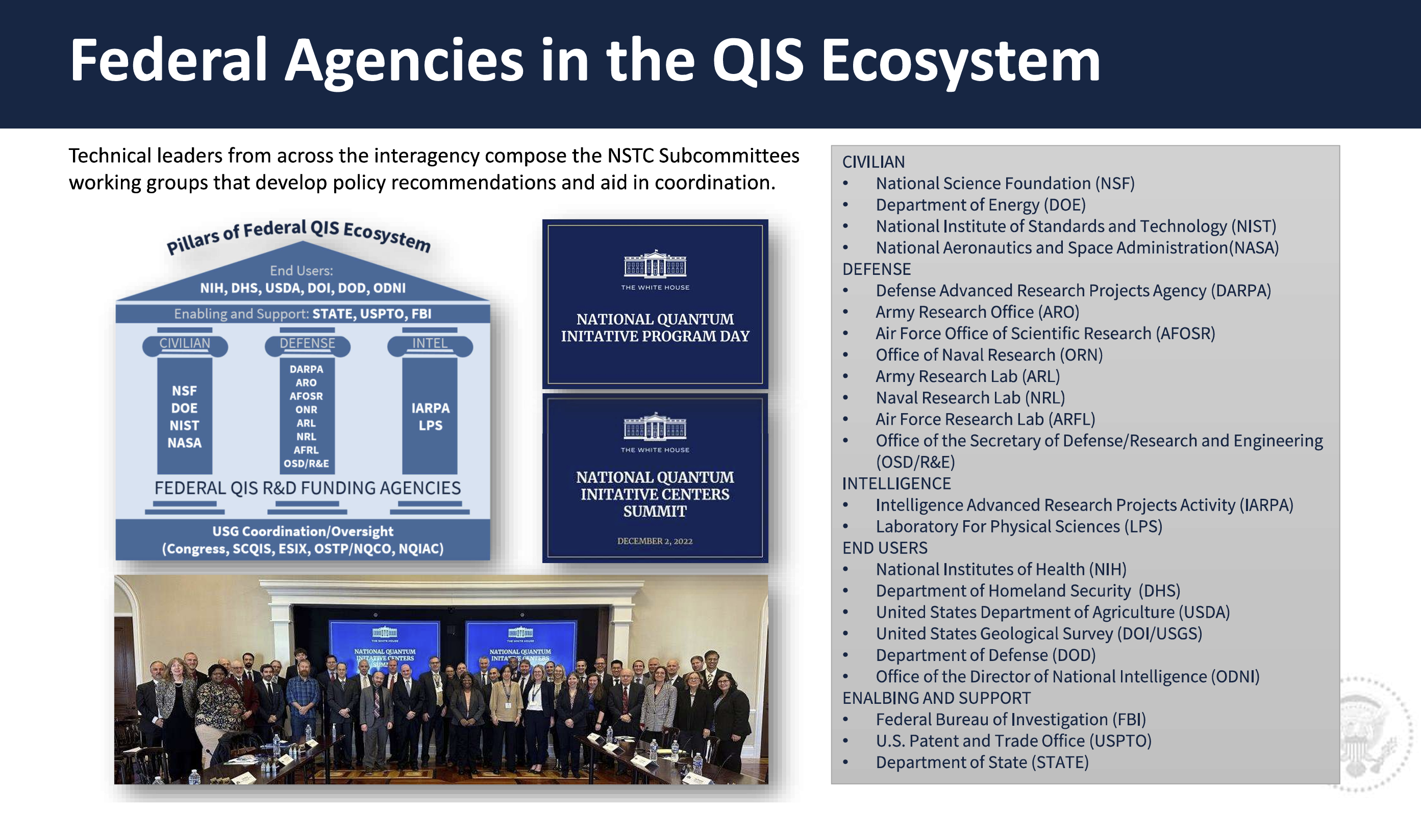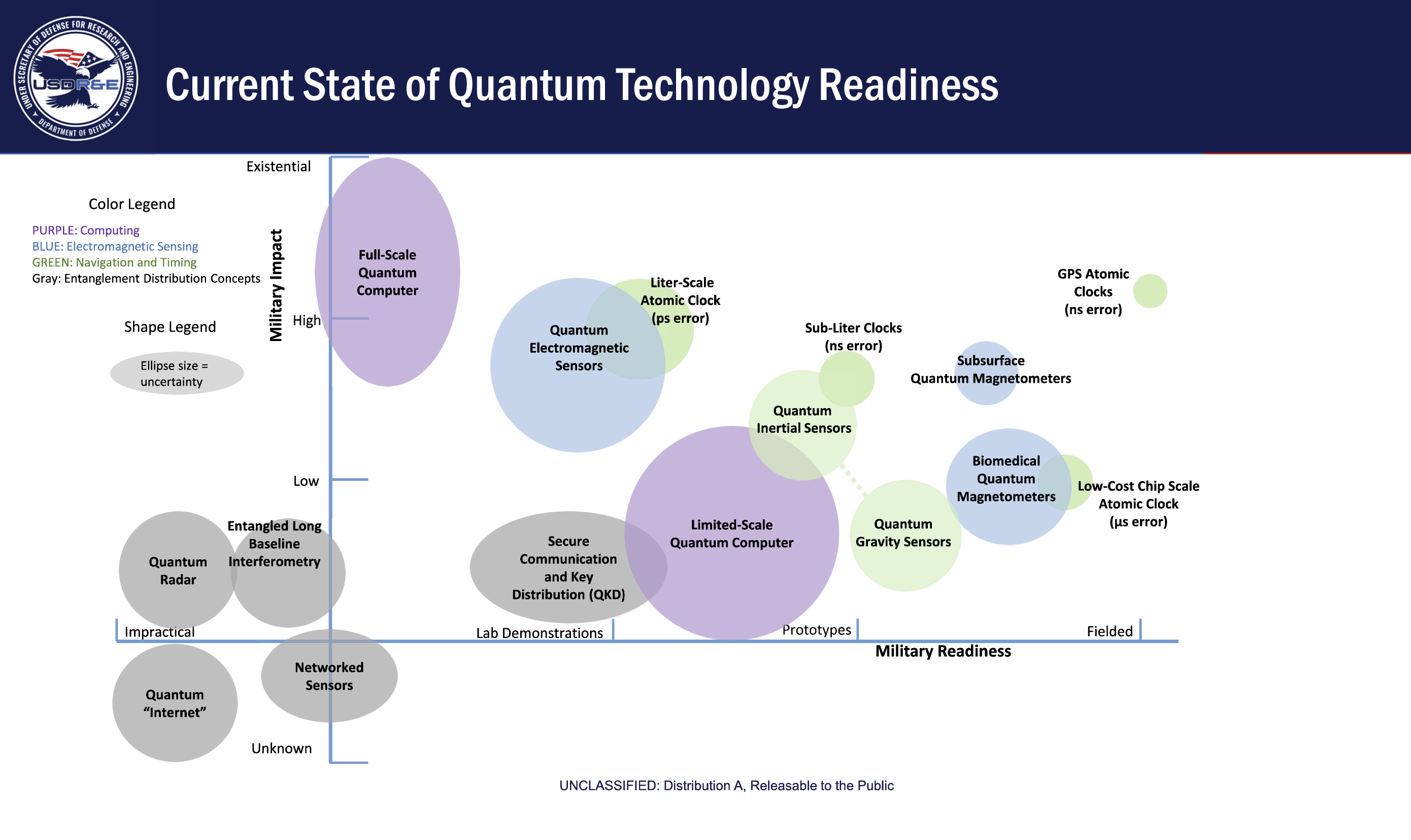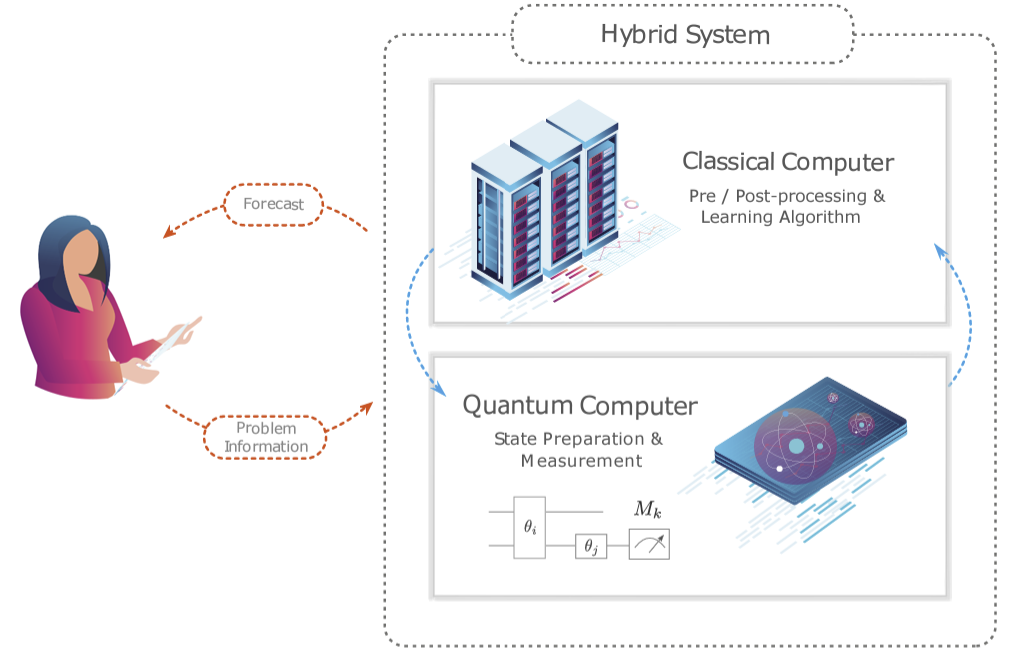Hybrid Quantum-Classical Machine Learning: Introduction
May 16, 2024In this first of a series of special guest blogs, Dr Alexander Perry, Adjunct Professor specializing in Computer Science and Quantum Computing at Capitol Technology University, provides his white paper insights on his experience with hybrid quantum-classical machine learning (HQML).
To learn more about this exciting field of study, read below and be sure to join Dr. Perry on Thursday, May 23 at 12:00 p.m. (EST) for his Cap Tech Talk webinar, “Introduction to Hybrid Quantum-Classical Machine Learning”. Registration Link.
By Dr. Alexander Perry
Some of the latest buzz terms in global industry and governments are “machine learning”, “classical computers” (think desktop or server), and “noisy intermediate-scale quantum (NISQ)”. Industry and governments are pouring millions of dollars into quantum applications to achieve increased performance and solve classically intractable challenges. Enhancing classical machine learning is an application seeing keen interest.
This blog is the first in a series where I will give my thoughts and opinions on hybrid quantum-classical machine learning (HQML). I will base my thoughts on existing works, the relevance of HQML, and uses cases in cybersecurity. I will then propose a prototype implementation framework.
Hybrid quantum-classical machine learning (HQML) augments conventional machine learning with a quantum processing device, component, or unit (we will call QPU for simplicity). HQML is expected to have applications in fields such as cybersecurity (i.e. data classification) and quantum chemistry (i.e. drug discovery). In cybersecurity, HQML is expected to help classify large volumes of network traffic, among other applications, faster than classical/conventional approaches alone.
QPUs are currently implemented as NISQ devices from companies including IBM, Quantinuum, and QuEra through cloud-based QPU services or physical devices. NISQ devices are limited-scale quantum devices/computers (LSQD) impaired by environmental noise. Providers offer open-source software libraries in languages like Python to augment and enhance classical machine learning.
Knowing this, we will examine and apply HQML with NISQ to real-world cybersecurity challenges in a series of blogs composed of three sections:
- HQML, Who Cares?
- HQML Case Studies Explored
- Proposal: A Scalable Prototyping Framework
The first section will explore the relevance of HQML on limited-scale quantum computers using a modified version of the Heilmeier Catechism:
- What is HQML via Limited-Scale Quantum Computing?
- Who cares? If you are successful, what difference will it make?
- What are you trying to do?
- How is it done today, and what are the limits of current practice?
- What is new in your approach and why do you think it will be successful?
- What are the risks?
- How much will it cost?
- How long will it take?
- What are the mid-term and final “exams” to check for success?
The second section will present the findings of HQML case studies on relevant real-world challenges such as data classification and clustering. And the third section will outline a proposed scalable open-source framework for rapid prototyping of HQML applications.
In review, enhancing classical machine learning using QPUs in HQML is seeing keen interest from industry and governments globally. Providers offer open-source software libraries in languages like Python to support this interest. In cybersecurity particularly, HQML is expected to help classify large volumes of network traffic faster than classical approaches. With this in mind, we will examine and apply HQML on LSQD to real-world cybersecurity challenges in a series of blogs. Stay tuned!!!
Author
Alexander Perry is an adjunct professor at Capitol Technology University and a data scientist performing applied research in hybrid quantum-classical machine learning (HQML). His expertise includes Cyber, Data Science, Artificial Intelligence/Machine Learning (AI/ML), and Quantum Computing. His previous roles have included software engineer, system administrator, data scientist, technical director, and data science team lead.
References
-
Biamonte J., Wittek P., Pancotti N., Rebentrost P., Wiebe N., and Lloyd S. "Quantum machine learning", arXiv (2018). url: https://arxiv.org/abs/1611.09347 (34)
-
Moler K., Tahan C., Abo-Shaeer J., Chong f., Clarke J., Frincke D., Herrera G., Mason N., Oliver W., Preskill J., Ritter M., Schoelkopf R., Svore K., Wang J., Ye J., and Wong T. et al. “NQIAC Slides 2022-12-16”. National Quantum Initiative Advisory Committee (NQIAC)(2022). url: https://www.quantum.gov/wp-content/uploads/2023/01/NQIAC-Slides-2022-12-16.pdf (50)
-
Department of Energy, Office of Science. "DOE Announces $24M for Research on Quantum Networks", HPC Wire (2023). url: https://www.hpcwire.com/off-the-wire/doe-announces-24m-for-research-on-quantum-networks/
-
Thomas W. “FY24 Budget Outlook: Department of Defense”, American Institute of Physics, FYI: Science Policy News (2023). url: https://ww2.aip.org/fyi/fy24-budget-outlook-department-of-defense
-
Edwaeds J. “NIST Issues Congressionally Mandated Report on Emerging Tech Areas”, ExecutiveGov (2023). url: https://executivegov.com/2023/08/nist-issues-congressionally-mandated-report-on-emerging-tech-areas/
-
National Science Foundation. "NSF Invests $38M to Advance Quantum Information Science and Engineering", HPC Wire (2023). url: https://www.hpcwire.com/off-the-wire/nsf-invests-38m-to-advance-quantum-information-science-and-engineering/
-
Williams A. "AFRL opens Extreme Computing centre for quantum computing research", Electronics Weekly (2023). url: https://www.electronicsweekly.com/news/research-news/afrl-opens-extreme-computing-centre-for-quantum-computing-defence-research-2023-08/
-
Department of Energy, Office of Science. "DOE Announces $11.7 Million for Research on Quantum Computing", Department of Energy (2023). url: https://www.energy.gov/science/articles/department-energy-announces-117-million-research-quantum-computing
-
IBM Corp. "Truist and IBM Collaborate on Emerging Technology Innovation and Quantum Computing", HPC Wire (2023). url: https://www.hpcwire.com/off-the-wire/truist-and-ibm-collaborate-on-emerging-technology-innovation-and-quantum-computing/
-
Ambrose M. "Expansion of National Quantum Initiative Pitched to Science Committee", American Institute of Physics, FYI: Science Policy News (2023). url: https://ww2.aip.org/fyi/expansion-of-national-quantum-initiative-pitched-to-science-committee
-
Benedetti M., Lloyd E., Sack S., and Fiorentini M. "Parameterized quantum circuits as machine learning models", arXiv (2019). url: https://arxiv.org/abs/1906.07682 (2)
-
Qiskit Machine Learning Development Team. "Qiskit: An Open-source Framework for Quantum Computing", IBM Corp. (2024), doi: 10.5281/zenodo.2573505, url: https://www.ibm.com/quantum/qiskit
-
Ibrahim M. "Writing a Hybrid Quantum Algorithm using the Intel® Quantum SDK Beta Version", Linkedin (2022). url: https://www.linkedin.com/pulse/writing-hybrid-quantum-algorithm-using-intel-sdk-beta-ibrahim/ (133)
-
Chang D. "Parameterized Quantum Circuits with Quantum Kernels for Machine Learning: A Hybrid Quantum-Classical Approach", arXiv (2022). url: https://arxiv.org/abs/2209.14449 (3)
-
Britt K. and Humble T. "High-Performance Computing with Quantum Processing Units", arXiv (2015). https://arxiv.org/abs/1511.04386
-
Schuld M. and Killoran N. "Quantum machine learning in feature Hilbert spaces", arXiv (2018). url: https://arxiv.org/abs/1803.07128
-
Heilmeier G. “The Heilmeier Catechism”, Defense Advanced Research Projects Agency (DARPA, 1976). url: https://www.darpa.mil/work-with-us/heilmeier-catechism





